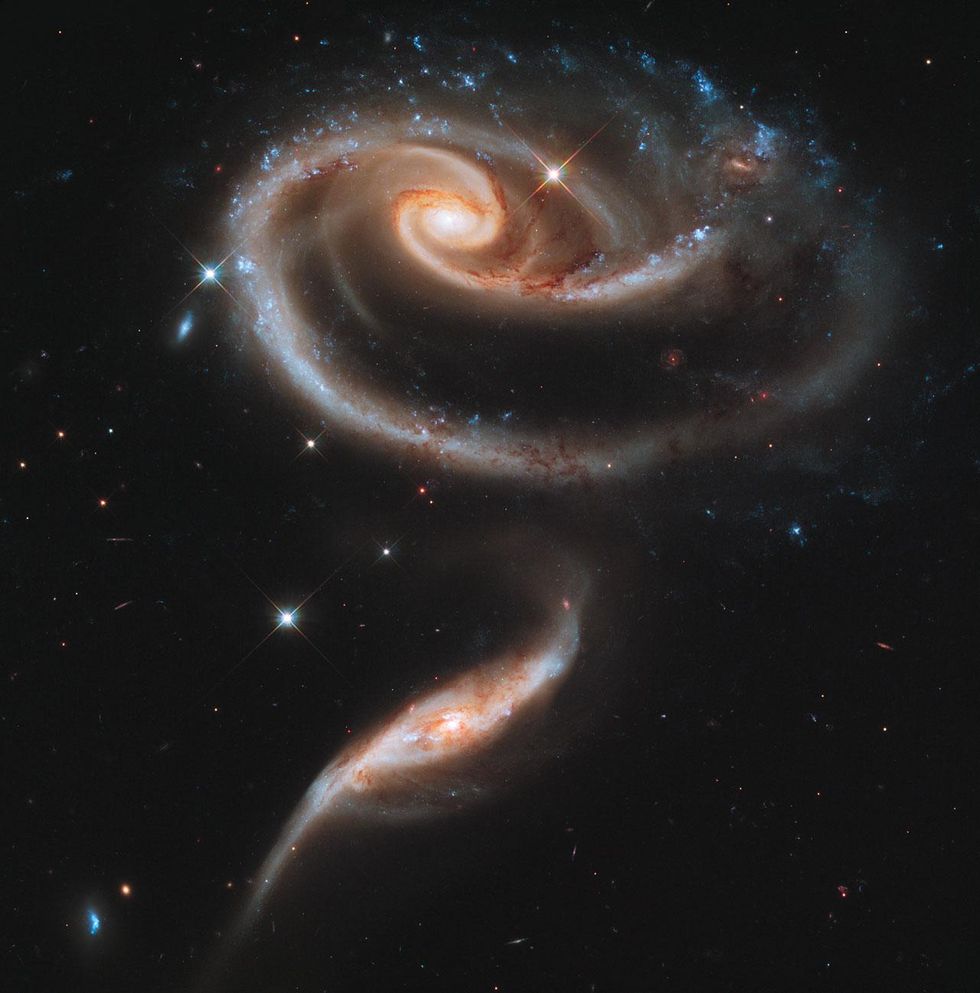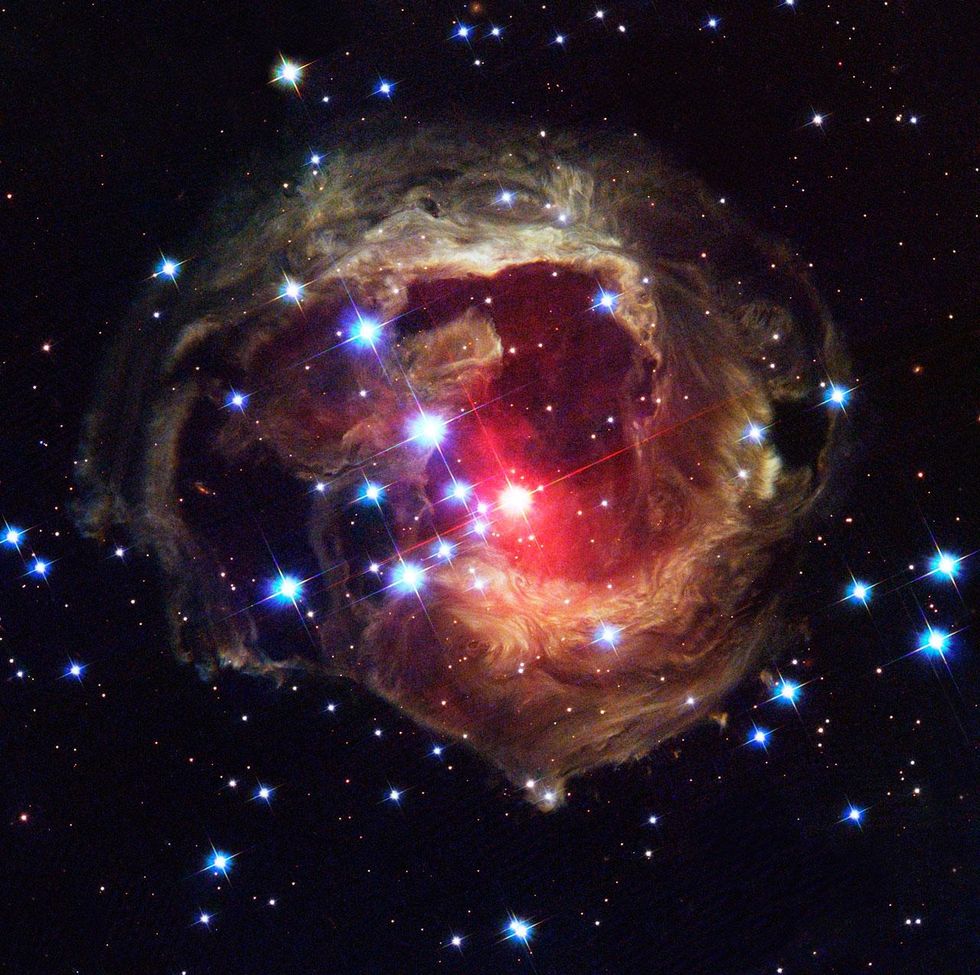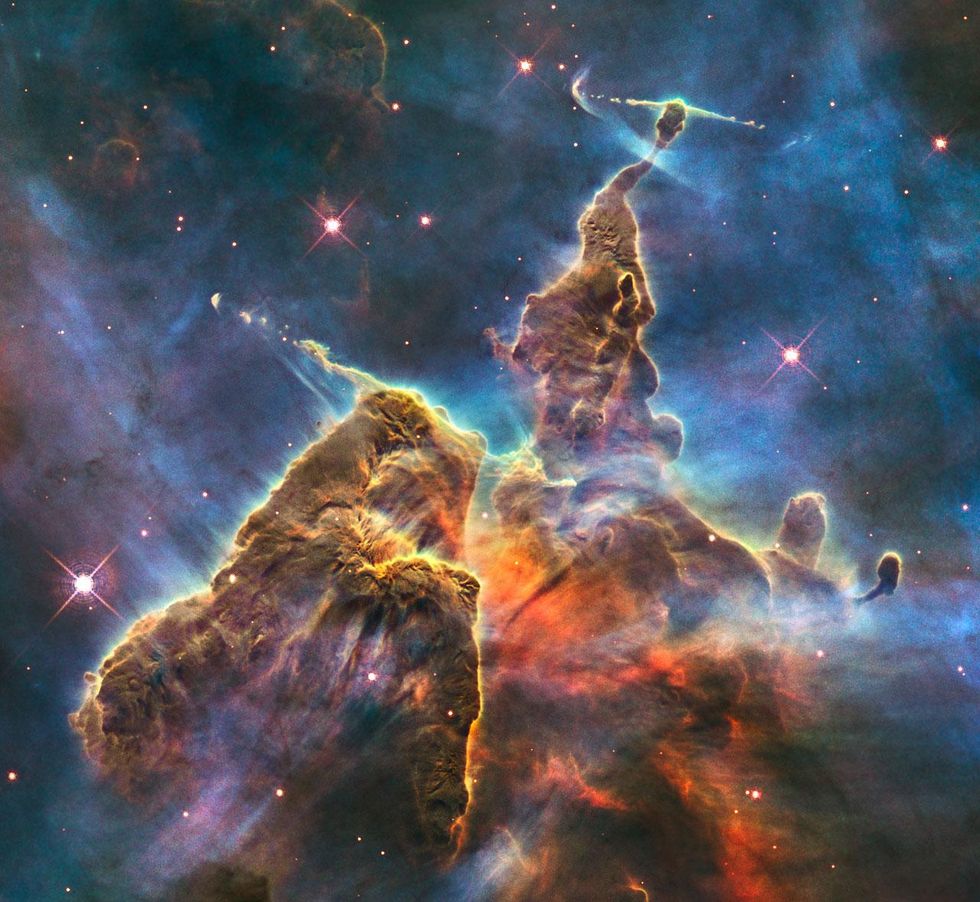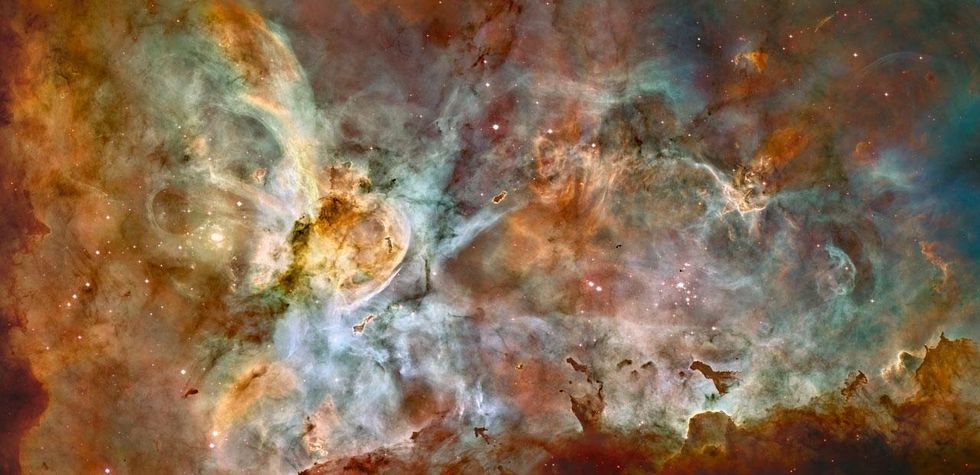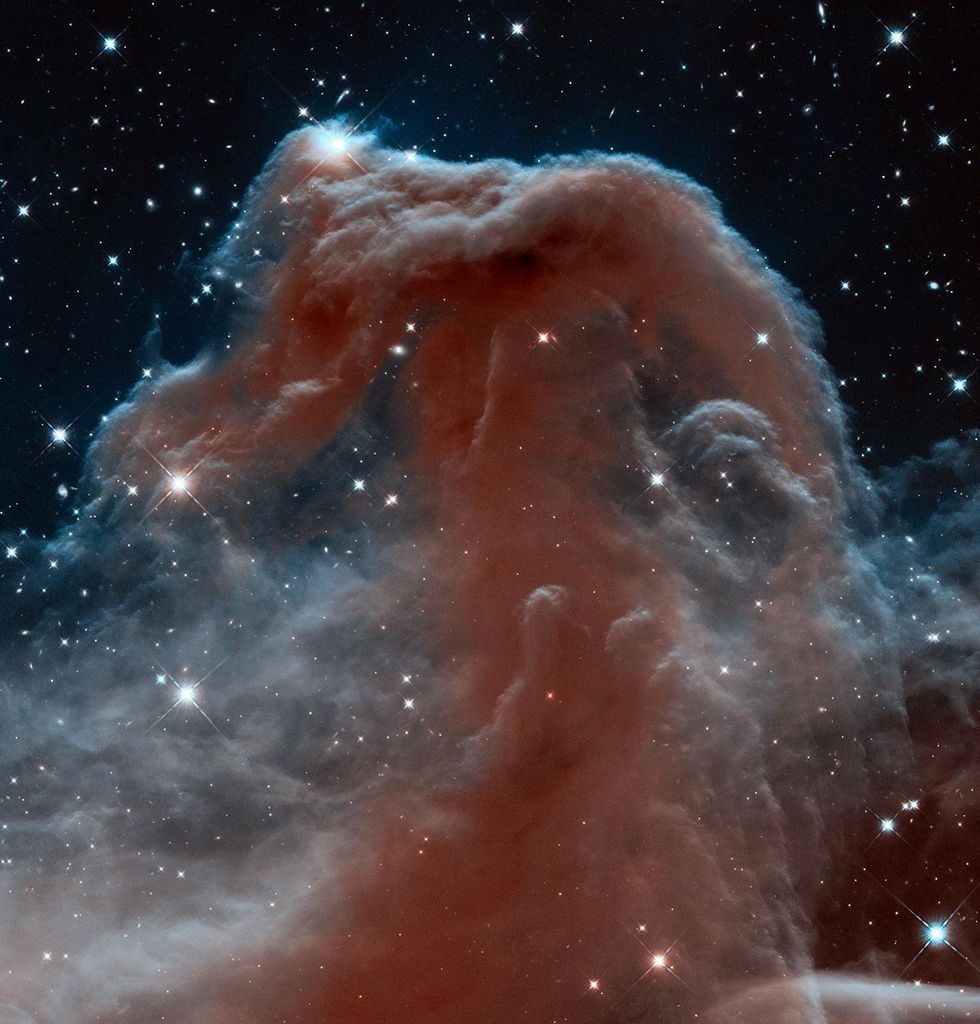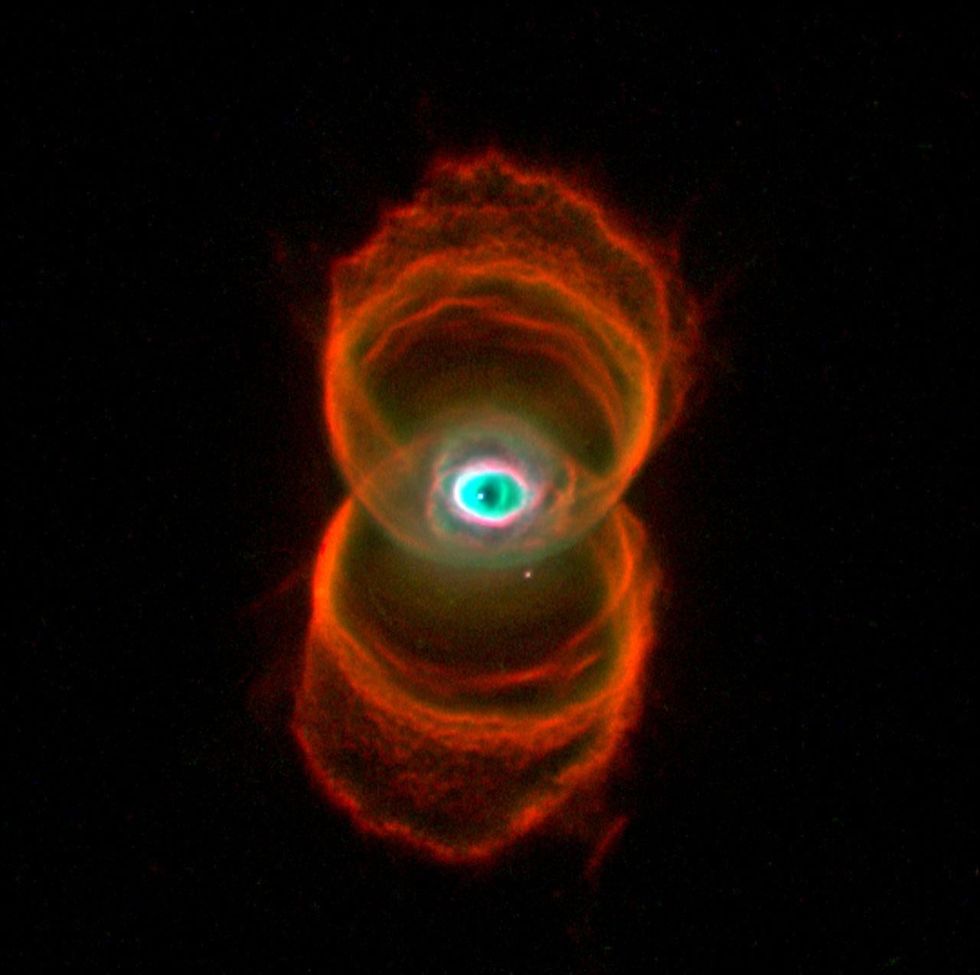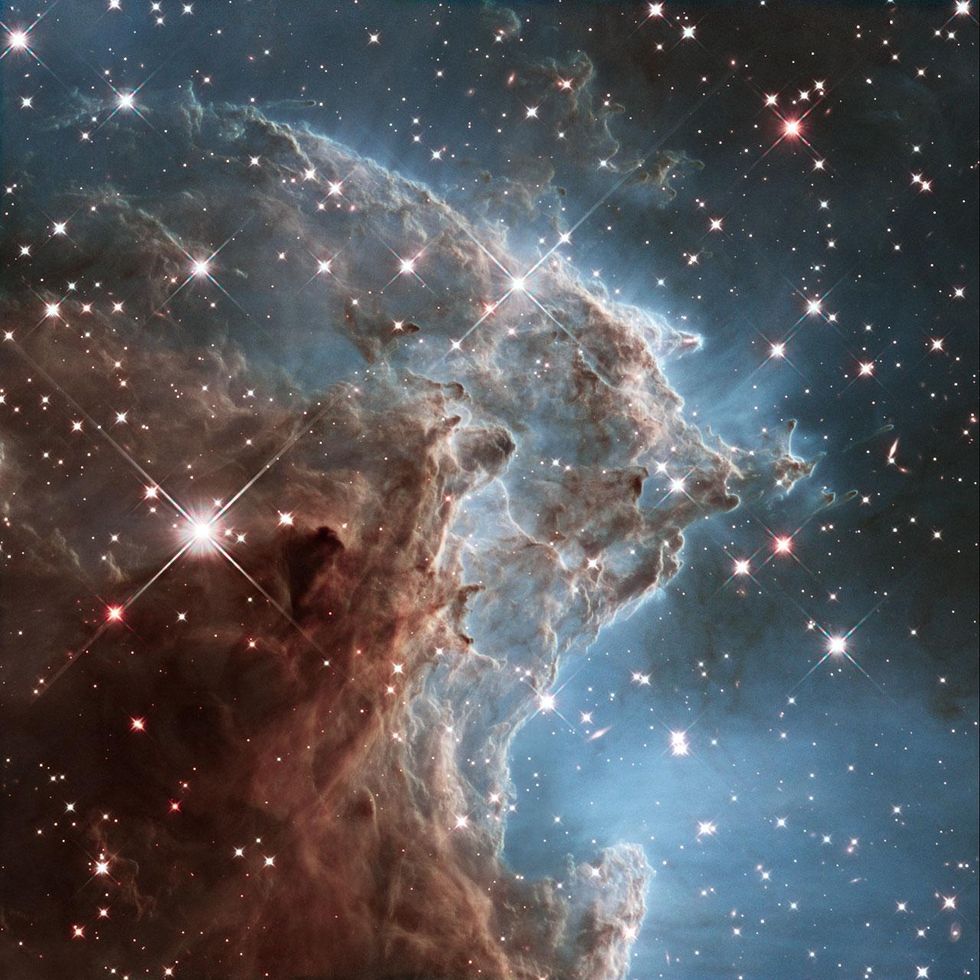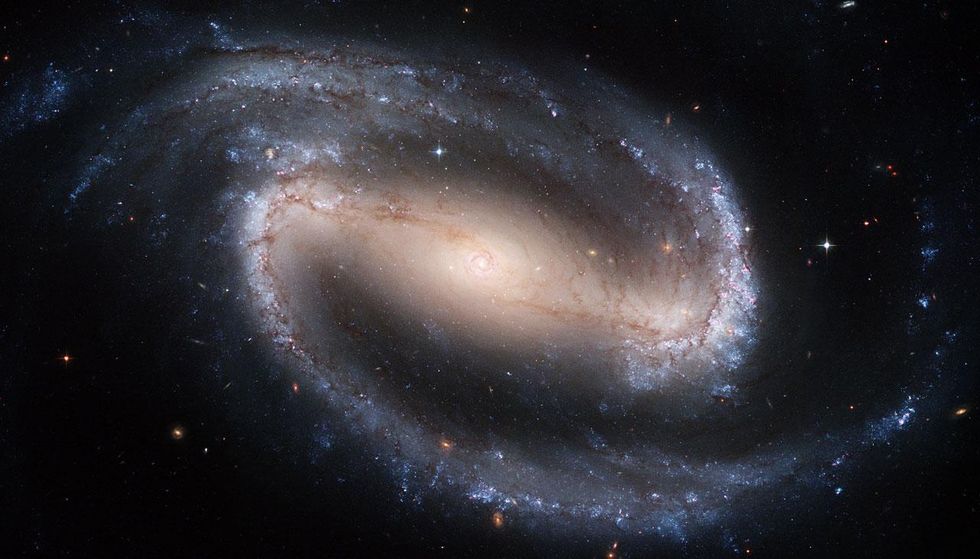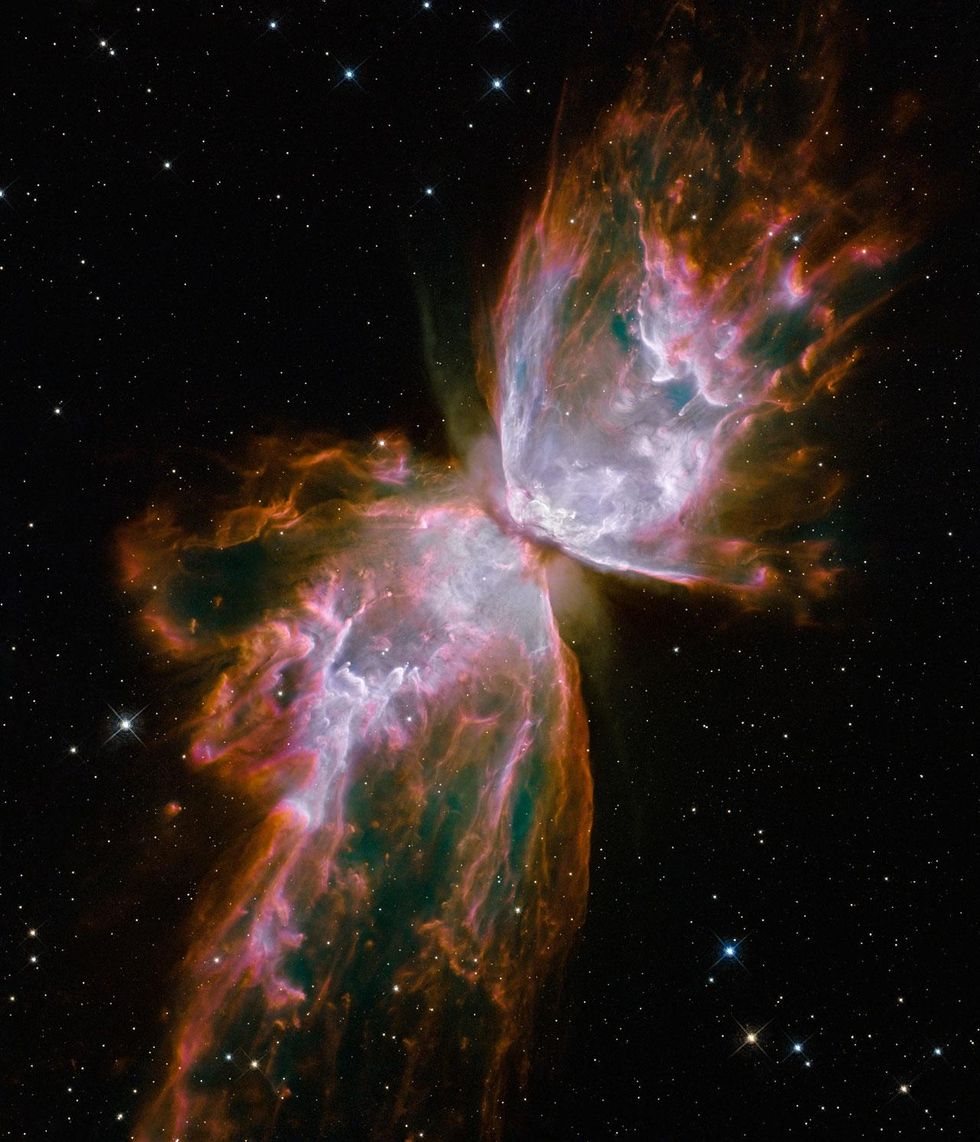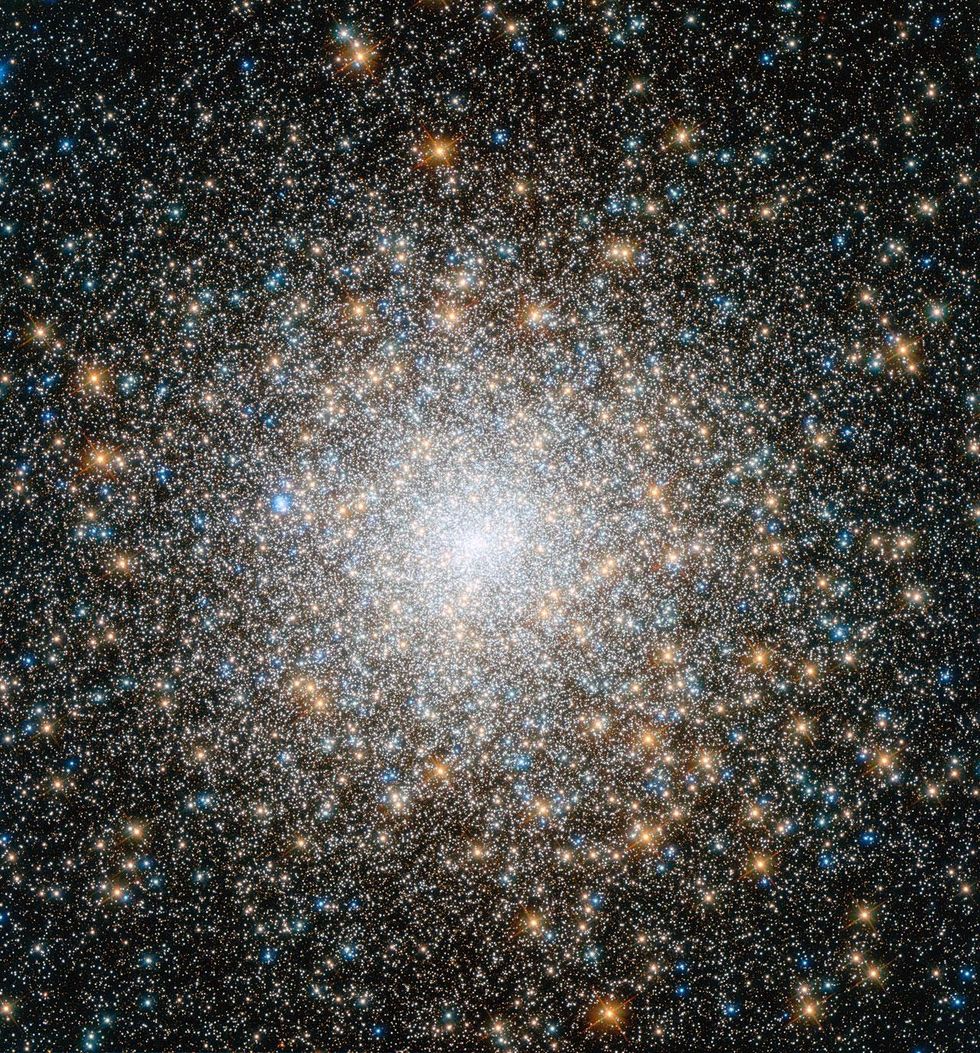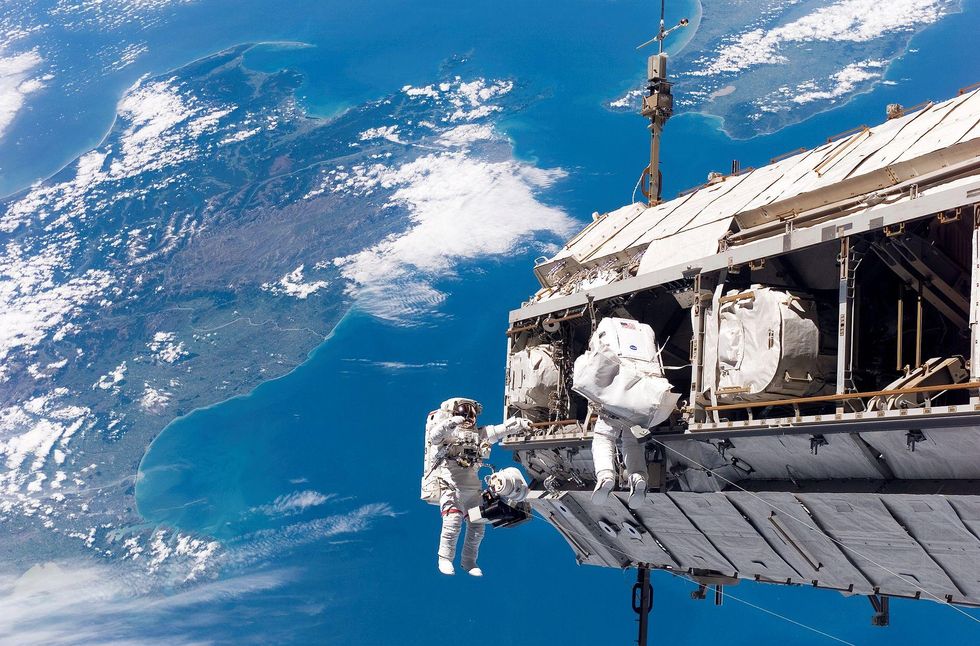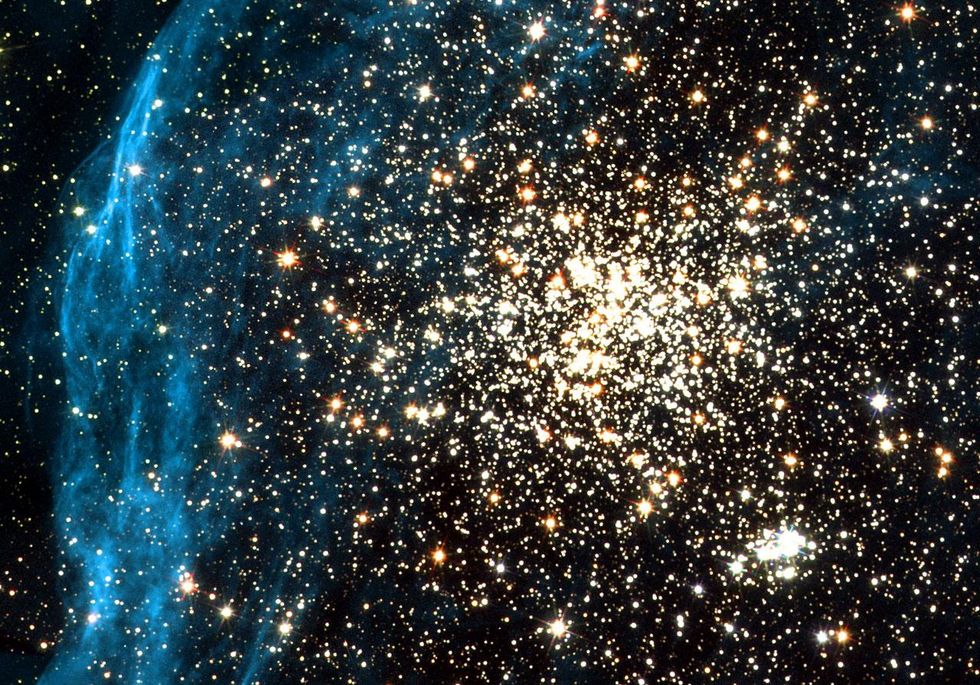Science & Tech
Dina Rickman
Jul 10, 2020
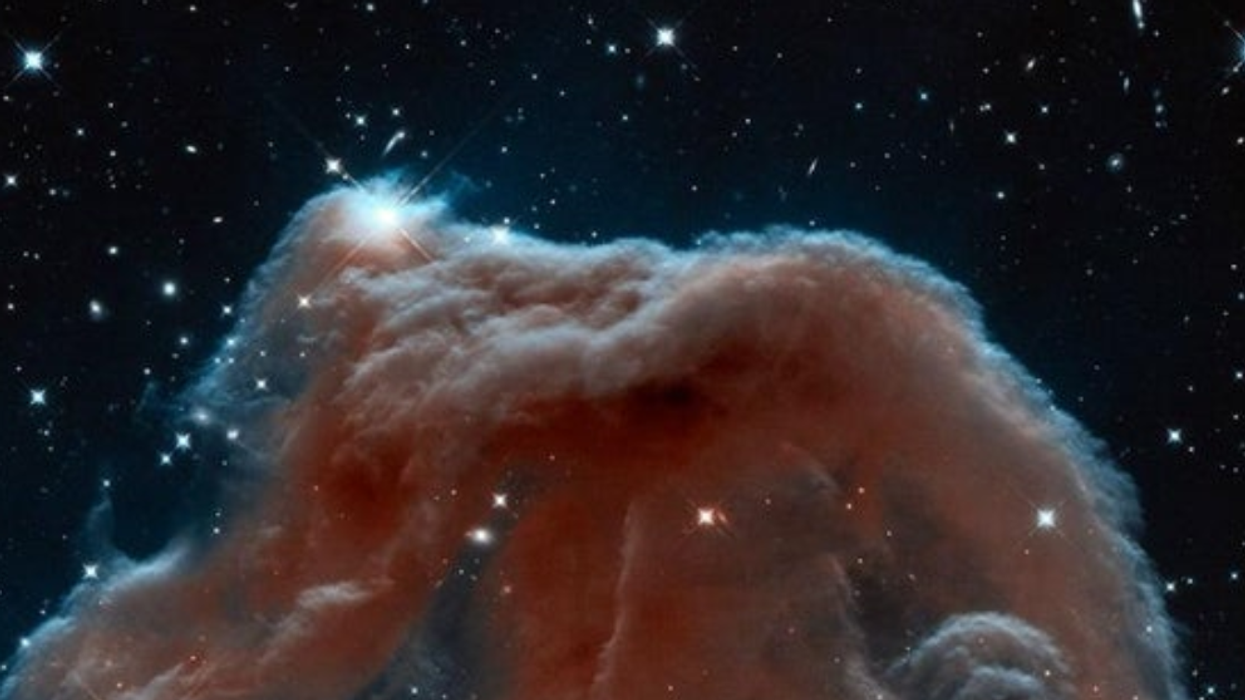
1.
A pair of interacting galaxies called Arp 273. Nasa believes the smaller galaxy has passed through the larger one, causing the ripple effect.
2.
This picture captured light "echoing" from the star V838 Monocerotis three years after it suddenly brightened to 600,000 times the luminosity of Earth's Sun, in what's known as a stellar outburst.
3.
The Carina Nebula is a cloud of dust, hydrogen, helium and other gases around 7,500 light years away from Earth. In this picture the oxygen is blue, hydrogen and nitrogen are green and sulphur red.
4.
This second image of the Carina Nebula shows a star forming over 50 light years.
5.
Another Nebula, known as Barnard 33, rising in the constellation of the Orion.
6.
The MyCN18 is a planetary Nebula shaped like an hourglass around 8,000 light-years away from Earth. It was featured on the front of National Geographic in April 1997 and on the cover of Pearl Jam album Binaural.
7.
The NGC 2174 (also known as the Monkey Head Nebula) is filled with young stars.
8.
The Hubble Space Telescope captured this image of a complete galaxy, the NGC 1300.
9.
What look like butterfly wings in this image are actually incredibly hot cauldrons of gas ejected from a dying star five times bigger than the Sun. The gas is tearing through space at more than 950,000 kilometres per hour.
10.
The Messier 15 is 35,000 light years away and, at 12 billion, is one of the oldest cluster of stars known to man.
11.
Astronauts Robert L Curbeam, Jr (left) and Christer Fuglesang during a spacewalk in 2006.
12.
It is thought a supernova blast created this double cluster of stars.
Top 100
The Conversation (0)
